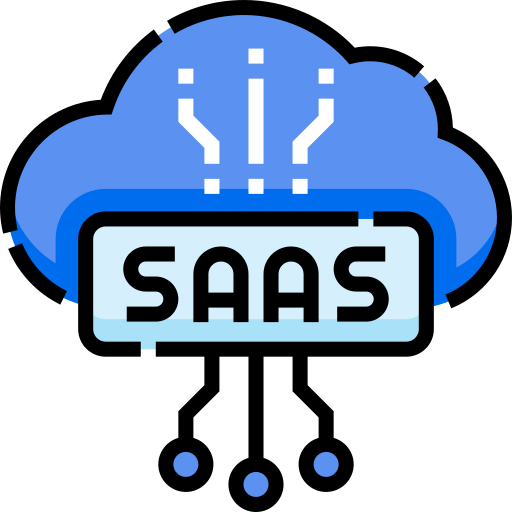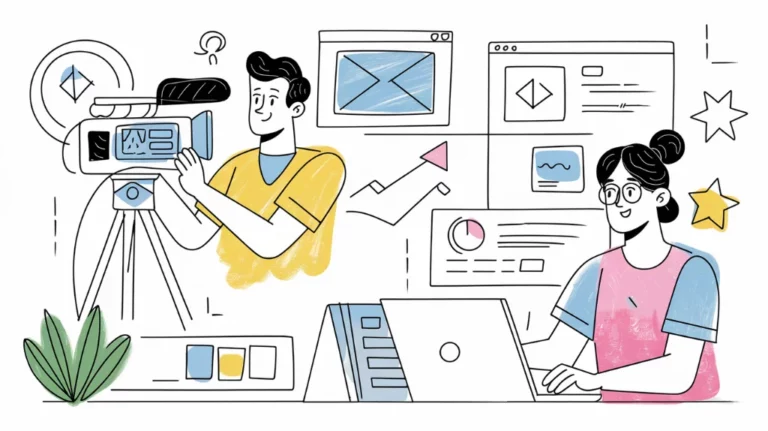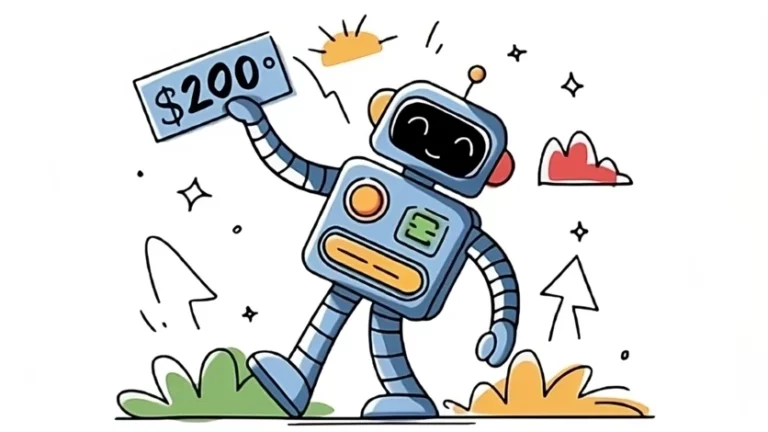The realm of Software as a Service (SaaS) is a dynamic and ever-expanding frontier, brimming with opportunities for those ready to build. Yet, the initial spark of entrepreneurship often flickers and dims at the idea stage. Aspiring founders can find themselves paralyzed by the pursuit of the next revolutionary concept, laboring under the misconception that their SaaS offering must be entirely novel to succeed. But what if the key to success lies not in reinvention, but in refinement? This article delves into why focusing on solving straightforward, persistent problems can be a remarkably effective path to SaaS success. It argues that simplicity, coupled with astute execution, often trumps the pursuit of overly complex or groundbreaking innovations.
What Makes a Simple SaaS Solution a Winner?
Consider Loom, a seemingly unassuming tool. In essence, Loom offers a streamlined way to record and share videos. This wasn't a radical departure in technology, but rather a focused solution to a prevalent challenge: efficient visual communication, particularly in the burgeoning landscape of remote work. Loom’s triumph stems from its incredibly intuitive interface, the allure of its freemium pricing model, and its inherent ability to give users back their most precious resource: time. Professionals across countless industries have embraced Loom for its straightforward functionality and the immediate value it provides. Think about the endless email threads trying to explain a technical issue - a quick Loom video often resolves it in minutes.
Then there's Calendly, a tool that transformed the often-arduous task of scheduling into a simple click. The underlying concept wasn’t revolutionary; appointment scheduling software had existed for years. However, Calendly’s seamless execution, its elegant user experience, and its laser focus on solving a universal pain point – the seemingly endless back-and-forth emails required to coordinate meeting times – propelled it to widespread adoption. Imagine the sheer volume of productivity hours salvaged by eliminating those scheduling email exchanges. These examples underscore a critical principle in the SaaS world.
Key takeaway: Prioritize exceptional execution and an intuitive user experience over chasing overly ambitious or convoluted ideas. Sometimes, the most effective solutions are the ones that make the complex seem effortless.
Which Types of SaaS Solutions Consistently Achieve Success?
Certain categories of SaaS products have a proven track record of success, often because they directly address fundamental needs. Two prominent types stand out:
- Can Your SaaS Help Users Save Time? Tools that fall into this category become indispensable by alleviating time-consuming tasks. Think of smallpdf, a versatile online platform for PDF conversion and editing. Its core functionalities are relatively basic, yet its accessibility and efficiency in handling everyday PDF-related tasks have garnered a massive user base and significant revenue, primarily through advertising. Consider also simple unit converters, readily available online. While their function is elementary, their immediate utility in various professions and daily life leads to substantial traffic and ad revenue. These tools thrive because they directly address the common frustration of wasting time on manual processes. A recent study indicated that knowledge workers spend an average of 20% of their workweek on repetitive tasks that could be automated or streamlined.
- Does Your SaaS Empower Users to Generate Revenue? SaaS products that directly contribute to a user's bottom line often experience high adoption rates and strong customer loyalty. Consider tools like Tweethunter, which assists users in cultivating a strong personal brand and growing their audience on Twitter, a platform increasingly recognized for its business potential. Similarly, Realomate streamlines lead generation for real estate agents, a profession where consistent lead flow is paramount. SaaS offerings that directly impact a user's income stream tend to enjoy robust retention rates and benefit significantly from positive word-of-mouth referrals. A survey of small business owners revealed that solutions directly impacting revenue saw a 30% higher renewal rate compared to other software categories.
Actionable Advice: Reflect on the repetitive, time-consuming tasks your target audience routinely encounters. Alternatively, explore opportunities to create tools that directly empower them to save money or, even better, generate more income. These are fertile grounds for building a successful SaaS business.
Why Do "Boring" SaaS Ideas Often Prove to Be Highly Effective?
The remarkable success of seemingly "boring" SaaS tools serves as a compelling testament to the power of addressing fundamental needs. Consider the enduring popularity of unit converters, bank statement converters, and URL shorteners. These tools may lack the flashy appeal of cutting-edge AI, but their consistent demand underscores a critical insight: practical utility often trumps sheer novelty.
For instance, Bankstatementconverter.com may not be a glamorous name, but it provides a vital service for tax preparation, a universally necessary task for individuals and businesses alike. This niche focus, addressing a specific yet widespread need, translates into a steady stream of users. Even in the seemingly saturated market of URL shorteners, new entrants continue to emerge and succeed by offering competitive pricing structures or introducing unique, albeit subtle, feature enhancements. Think about the value proposition of a URL shortener with advanced analytics – offering insights beyond simple click counts.
Fact: While these types of tools might not generate buzz on tech blogs, they consistently generate revenue through various monetization strategies, including advertising, subscription models, or tiered enterprise offerings. Their unassuming nature belies their significant impact on productivity and efficiency.
How Can SaaS Products Effectively Leverage Simplicity as a Key Differentiator?
The story of the Million Dollar Homepage is a fascinating illustration of how a remarkably simple idea, executed in a novel and transparent way, can capture significant attention and revenue. Selling individual pixels for $1 each wasn't technologically complex, but the sheer audacity and clarity of the concept resonated widely. Similarly, Scytale tackles the often-labyrinthine process of achieving crucial compliance certifications like ISO 27001. Instead of offering a bewildering array of features, Scytale simplifies this complexity by automating key tasks and seamlessly integrating with existing development and security tools. This focus on simplification is a major part of its appeal.
Pro Tip: Resist the urge to overcomplicate your SaaS offering with an overwhelming number of features. Often, users deeply value simplicity, clarity, and ease of use over a vast, potentially confusing, array of functionalities. Focus on mastering a core set of features that solve the target problem exceptionally well.
Is Perplexity AI Simply a Rebranded Version of ChatGPT's Technology?
At first glance, Perplexity AI might be perceived as merely a wrapper around the powerful technology of ChatGPT. However, a closer examination reveals a strategic focus that distinguishes it. Perplexity AI concentrates on specific use cases, particularly information retrieval and providing context-aware answers. Its simplicity lies in its directness. Users seeking quick, targeted information can bypass the broader conversational capabilities of general-purpose AI models like ChatGPT, finding Perplexity AI's focused approach more efficient for their needs.
This highlights a valuable strategy in the SaaS landscape: taking existing, powerful technology and repackaging it with a strong emphasis on usability and accessibility for a specific niche audience. By curating the functionality and tailoring the user experience, SaaS entrepreneurs can carve out a successful niche even in crowded markets.
How Can Emerging SaaS Entrepreneurs Successfully Compete Against Established Industry Leaders?
Consider the insightful case study of a cheaper Bitly alternative. This SaaS provider carved out a niche by strategically undercutting the pricing of the established market leader. While Bitly offered an enterprise tier with custom terms of service for a substantial $20,000, this competitor offered a similar package for a mere $800. While the $750 difference might seem insignificant to the largest enterprises, the substantial cost savings compared to Bitly's premium offering presented a compelling value proposition for a significant segment of the market.
Takeaway: You don't need to engage in a head-to-head battle on every single feature with industry giants. Instead, meticulously analyze their pricing structures, identify potential gaps in their service offerings, and strategically position your SaaS as a more cost-effective and equally capable alternative. This targeted approach can attract customers seeking value without sacrificing essential functionality.
What Fundamental Elements Are Crucial for Achieving SaaS Success?
Several key elements consistently contribute to the success of SaaS ventures:
- Thoroughly Identify Genuine Pain Points: The foundation of any successful SaaS lies in solving a real problem. Focus your efforts on identifying small, yet consistently annoying, issues that your target audience faces.
- Prioritize an Exceptional User Experience Above All Else: Tools like Trello and Calendly haven't achieved widespread adoption solely due to their functionality. Their success is deeply intertwined with their intuitive user interfaces and the ease with which users can accomplish their goals. Make the user's life easier.
- Embrace the Power of Starting Small with an MVP: Begin with a Minimum Viable Product (MVP) that addresses the core problem effectively. This allows you to validate market demand and gather crucial user feedback before investing heavily in a full-fledged product.
- Strategically Leverage Integrations for Enhanced Value: Tools like Scytale demonstrate the power of seamless integration. By connecting with other platforms and services that users already utilize, you streamline workflows and enhance the overall value proposition of your SaaS.
- Recognize the Effectiveness of Freemium Models: Offering a valuable free tier can be a powerful strategy for attracting a large user base. This allows users to experience the benefits of your SaaS firsthand, paving the way for monetization through premium features and upgrades.
What Specific Actionable Steps Should Aspiring SaaS Founders Take Right Now?
Turning the desire to build a SaaS into a reality requires concrete action:
- Become a Keen Observer of Daily Frustrations: Actively listen to the complaints and frustrations voiced in online forums, social media groups relevant to your target audience, and even in everyday professional conversations. These pain points are often fertile ground for SaaS ideas.
- Diligent Explore Niche Markets with Untapped Potential: Many remarkably successful SaaS products cater to highly specific industries or user groups. Don't underestimate the potential of focusing on a niche market with unmet needs.
- Adopt an Iterative Approach Based on User Feedback: Don't wait for perfection before launching. Get your MVP into the hands of users quickly and then diligently iterate and improve based on their feedback. This user-centric approach is crucial for building a successful product.
- Maintain a Relentless Focus on Simplifying the User Experience: Strive to create a user interface that is intuitive and easy to navigate. Keep your feature set focused on directly addressing the core problem you're solving, avoiding unnecessary complexity.
- Develop a Strategic Monetization Plan: Carefully consider your monetization strategy. Will you rely on advertising, offer freemium plans with tiered pricing, or explore other models? Choose a strategy that aligns with your target audience and maximizes your revenue potential.
Why Are You Unnecessarily Complicating Your SaaS Vision?
Ultimately, achieving success in the SaaS landscape doesn't necessitate inventing the next groundbreaking technology that will reshape the digital world. You don't need to create the next Google or Slack. The path to success often lies in identifying a simple, yet pervasive, problem and delivering an effective solution with an exceptional user experience. Whether it's streamlining a time-consuming task, empowering users to generate more revenue, or automating a repetitive process, even seemingly small ideas, when executed with precision and a user-centric focus, can yield remarkable results.
Your Next Step: Identify a single, nagging annoyance or inefficiency that you or others regularly encounter. Validate the demand for a solution with a quick, lean MVP. Stop letting the pursuit of the perfect idea paralyze you. Start building, and witness how your simple idea can evolve into a valuable and indispensable tool.







